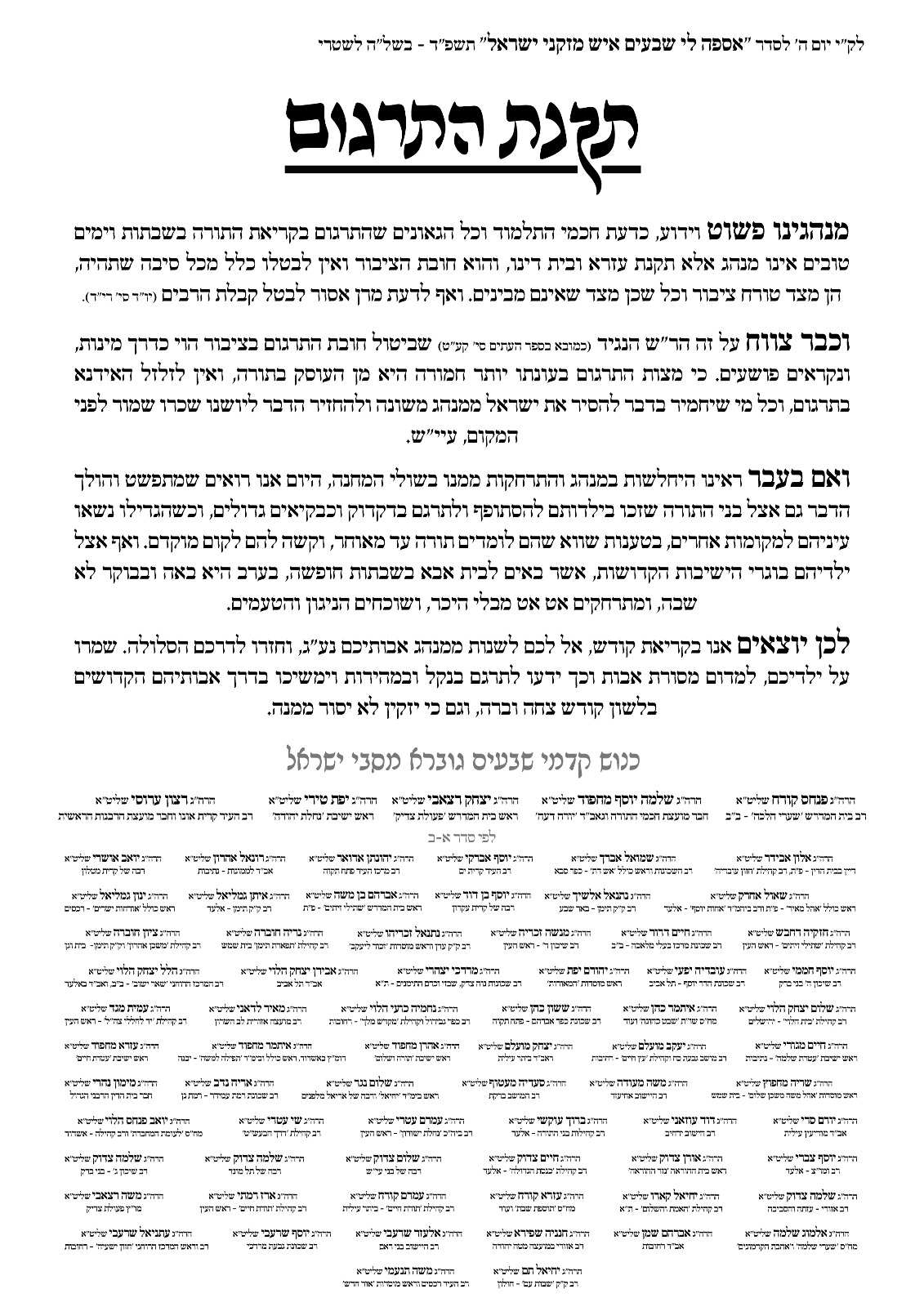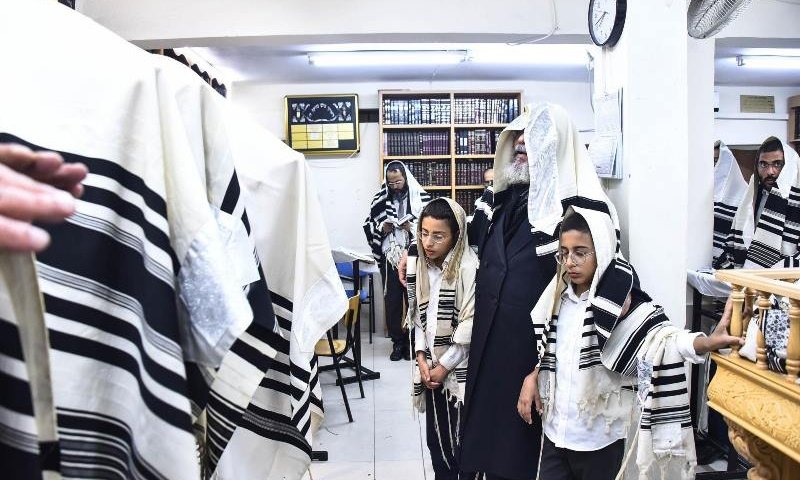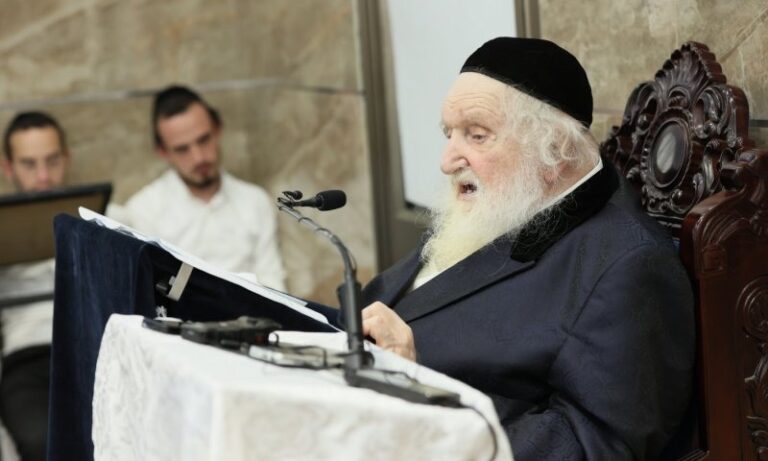For the first time in history, 70 Teimani Rabbanim signed a letter not to abandon the ancient communal minhag of translating the Torah.
The Rabbanim have become aware that some shuls have stopped translating Kriyas HaTorah and the Haftorah to the tzibur on Shabbos and Yom Tov, an ancient takanah from the days of Ezra.
The Rabbanim bemoan the fact that the minhag is slowly being abandoned: “And if in the past, we saw a weakening of the minhag and a distancing from it on the outskirts of the camp, today we see that it’s spreading even among Bnei Torah…”
The letter quotes Rebbe Shmuel HaNagid who spoke strongly against those who stopped translating the parsha in public and said that anyone who works to restore the minhag, “his sechar before the Makom is ensured.”
The Rabbanim ended the letter by stating: “Don’t change the minhag of your ancestors and return to the paved path. Ensure that your children learn the mesorah of their fathers and know how to translate quickly and easily.”

(YWN Israel Desk – Jerusalem)












7 Responses
Perhaps davening was too long for our generation who loses attention so quickly and thus it was modified.
Minhag yisroel Torah!!!!
R Shmuel Hanagid was the one who defended the Spanish minhag of dropping targum against Rav Hai Gaon who condemned the deterioration of the Minhag in the West. [See Otzar Hageonim Brachos 8a]
Very interesting! I never heard of this minhag before.
Is it done possuk by possuk, or do they read from the Sefer Torah straight until the end of the aliyah and then read the Targum? Or maybe they read the entire parsha and after it’s done, then they read the Targum on the whole parsha?
If the 2nd choice (until the end of the aliyah), when does the oleh say the bracha – before Targum or after?
When Jews migrate, the “minhagim” tend to change based on people from different places ending up in the same community since while migrants tend to form shuls based on their previous residence they usually end up mixing with people from other places. Other minhagim are affected by changing conditions (e.g. invention of electric lights, invention of high multistory apartment, varying conditions of security in the Jewish community, introductions of new foods and ways of cooking, etc,).
While the Jews in South Arabia (not just Yemen) were very stable for a long time, very many have migrated to places where they get “mashed up” with other Yidden, and it is reasonable to expect that their minhagim will get mixed into the mixture as new combinations of minhagim develop.
@ladler Having attended a teimani minyan once, I witnessed that each pasuk of the Torah is read one-by-one by the ba’al koreh and then the targum is read. [This is in accordance with the ruling of the Rishonim and Shulchan Aruch based on the Gemara that for the Torah itself only one verse is read before the targum as opposed to neviim where several pesukim may be read first. I don’t remember what the minyan did for the haftorah.] I have seen that many children are given the honor of reading the targum (perhaps one for the pesukim of each aliyah). Thus, at a young age they become proficient in reading Aramaic well.
If I’m not mistaken this minhag is performed every Friday after at the Kever of Shimon HaTzaddik after vasikin davening by a group of Sefardim who come from somewhere near Netanya. It’s very interesting to watch.